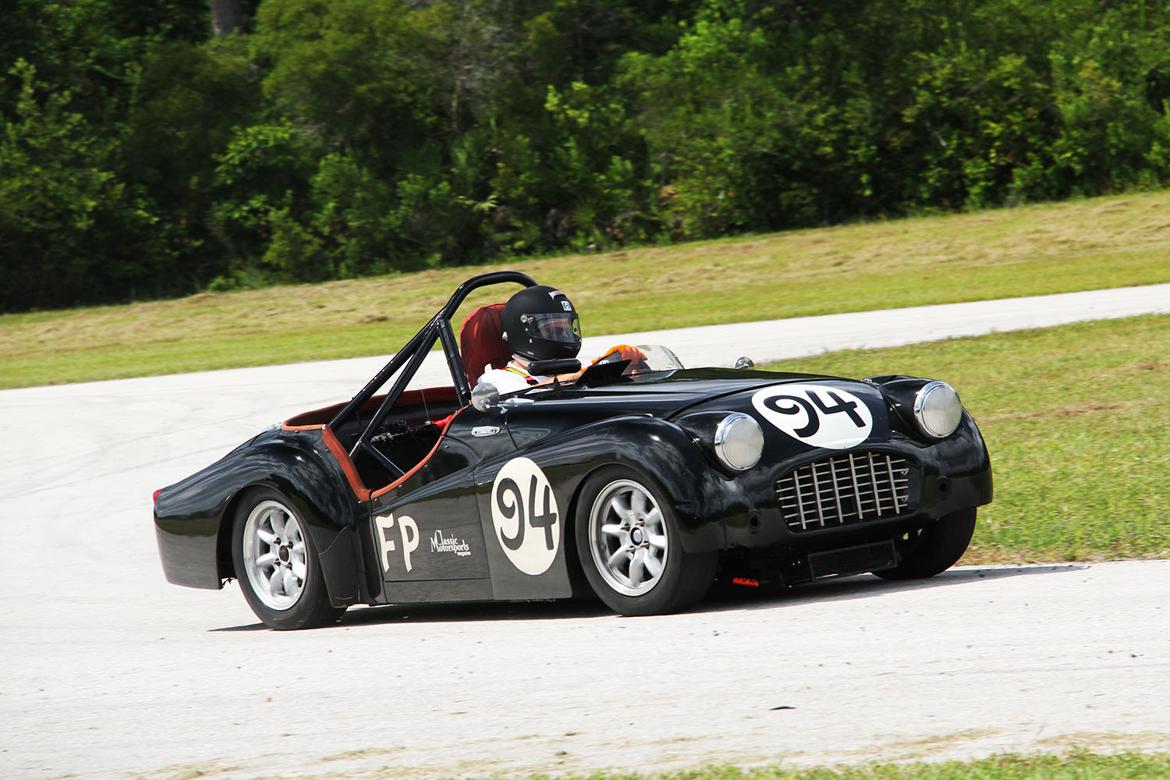Ron Francis Wiring
ronfrancis.com
(800) 292-1940


Working with electricity can be scary, and scary jobs are often left untouched. Why face a potential trouble spot when you can tackle a more comfortable task?
Such was the case with the electrical system of our Triumph TR3 vintage race car. When we first wired it up, we combined a cut-down version of the stock harness with a handful of additions to accommodate updates like electric fuel pumps, modern gauges and a kill switch.
After two decades of service, that haphazard patchwork of wiring and 60-year-old components was making our race car fussy to start, frequently leaving us stranded on the grid. Big shocker.
There had to be a better way. We considered rewiring the car from scratch, wondering which materials to order and in what quantities.
But then we found a simple, turnkey solution: Ron Francis Wiring’s new Bare Bonz Race wiring kit. This compact, lightweight panel features three relays, eight fused circuits and labeled, color-coded wiring. Its goal is to turn wiring a race car into a one-day project. The entire package retails for $279.95.
We ordered the kit, removed our old harness, and started with a blank slate. Here’s how we did it.
Instead of modifying the stock harness or creating a new system from scratch, we chose an easy alternative. The Bare Bonz Race kit from Ron Francis Wiring comes with just about everything it takes to wire up a race car.

Our car’s original wiring harness featured hasty additions and troublesome crimp-on connectors. No wonder the car didn’t always function properly.

Our old junction block was a mess, with various hot wires attached to an old transmission mount fixed to the firewall. Over the years, additions to this rat’s nest only made the situation worse. We were ready to replace it entirely.

The heart of the Bare Bonz Race kit is this wiring panel that includes three relays and eight fused circuits. We decided to use the relays to run our two electric fuel pumps and a thermostatically controlled cooling fan.

Rather than retain our 60-year-old ignition switch and generic starter button-the suspected cause of our starting issues-we added a proper ignition/starter switch. Ron Francis Wiring offers several options, most costing somewhere between $25 and $50.

Before mounting the wiring panel, we checked all of our connections.

Now we needed to install that panel. We built a mounting plate for it that attaches to the dash bar, placing it low and out of the weather. To access it, we can just pop open the original glove box door.

The fun part: removing the nasty wiring snarl that had been serving as our car’s nervous system. Before removing the wires, we traced and marked them.

We replaced our mismatched switches with fresh ones from Ron Francis Wiring. These are available with different ring colors; we chose red to match our interior. Since our car doesn’t run any night races, we skipped hooking up the lights on our AutoMeter gauges, making this job even easier.

Our new junction block, which feeds power to all of our engine accessories, also came from the Ron Francis Wiring catalog. This terminal seemed like a classier, more reliable solution than our old transmission mount. Budget less than $40 for one.

The supplied wire is color-coded and labeled, facilitating the installation as well as future troubleshooting.

Now we could start running wires for the various circuits, including the starter, ignition, brake lights, gauges, fuel pumps and electric fan.

One last thing: We rewired our kill switch so the alternator will no longer keep the car running when the switch is thrown.

We drew up our own wiring diagram. We’ll keep it with the car’s papers so that it’s always trackside.

This is perhaps the biggest, most unfamiliar task ahead of me. I'm looking forward to having a solid foundation of electrical knowledge, but I can't say I'm looking forward to the hours of homework to get it. Nature of the beast I suppose...
I'm hesitant to dive in though, because as it sits, my car is running and driving. I just know that there are pounds of unused wiring, relays, and switch boxes in there, and many, many features that are unused since the car is so far removed from stock. Needs to be done, but tackling that job means the car is off the road until the job is done to my satisfaction.
Cool. I will say this, PROPERLY crimped crimp on connectors work really well. The problem is most people don’t buy the little terminator to make sure it’s done right. What I love most about using crimp on is that the wires can be disconnected for diagnostics, and you can even swap wires around if you need to get power from elsewhere, and do it at the track. As A technician, I can’t tell you how much I love easy access for diagnostics and versatility.
I’m gearing up to re-wire my TR6 project. I was planning to start with a complete kit from Painless, Ron Francis, or Advance Auto Wire.
I'm planning on completely rewiring the DMC when I have it torn apart to fix the frame... this looks nice, but also like it doesn't have enough circuits for a full car with things like HVAC to run on...
In reply to Ashyukun (Robert) :
You could expand this one or double up.
Side note- I see you guys still used crimp ons, but didn’t terminate them right. Those little plastic sheathes over the barrel prevent any contraption from producing a fine, cold welded crimp. The proper way is a naked connector with heat shrink over that area to prevent arcing
Repeat after me kids: “No! No! No!”
“Yes! Yes! Yes!”

Displaying 1-6 of 6 commentsView all comments on the GRM forums
You'll need to log in to post.